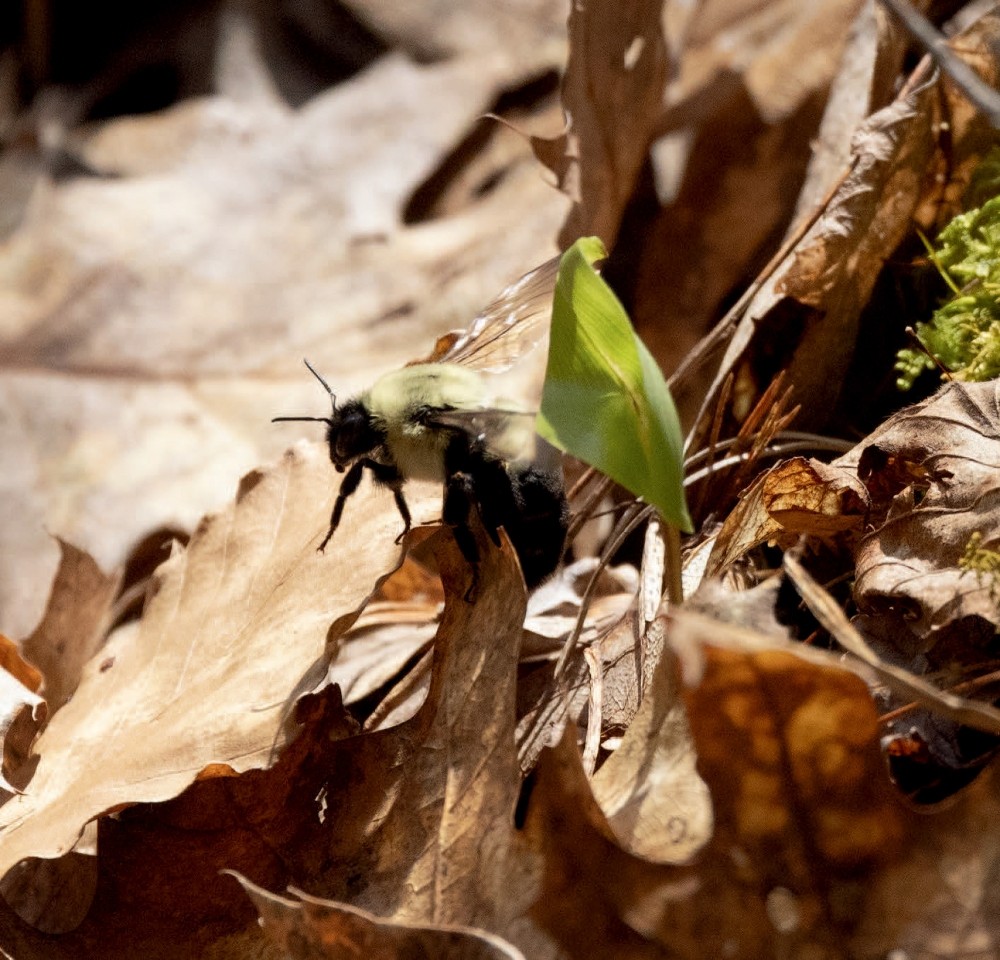
For conservationists seeking to reverse the global decline of bumble bee populations, pesticide contamination of soils is a significant concern. Although there has not been extensive research on how contaminated soils impact bumble bees, one study has shown that when the hibernating queens of some bumble bee species are exposed to the commonly used insecticide cyantraniliprole, the bees have higher winter mortality rates and slower brood emergence (the time required for a brood of bees to develop to the adult stage).
As described in a forthcoming article in Science of the Total Environment, Sabrina Rondeau and Nigel E. Raine, researchers both affiliated with University of Guelph and University of Ottawa, devised an experiment to investigate how common eastern bumble bee (Bombus impatiens) queens react to the presence of five frequently used agricultural pesticides in soils. Pesticides accumulate in the soils during the growing season, and the queens encounter them in autumn, when they seek out hibernation sites.
For the experiment, Rondeau and Raine set up 10 mesh-covered enclosures in which bees were unable to escape or to access the ground. In eight of these enclosures, they placed multiple containers of soil. Some of the containers held soil that was contaminated with high or moderate levels of pesticides and others held only uncontaminated soil. In the final two enclosures, as a control, Rondeau and Raine placed only containers with uncontaminated soil.
In September 2021, the researchers distributed a total of 44 common eastern bumble bee colonies among the enclosures and provided the insects with frozen pollen and goldenrod plants for the next several weeks, until the colonies’ gynes (young queens) had mated with drones and burrowed into the containers. Starting in late October, researchers began to dig up the queens and to record how many were in each container, their burrow depth, and observations about the bees’ condition.
Rondeau and Raine discovered that as a group, the queen bumble bees showed a strong preference for the pesticide-contaminated soil, regardless of what kind of pesticide had been applied. “On average, queens burrowed in the pesticide-free soil 1.3 to 2.4-fold less frequently than in any of the pesticide-treated soils at the lower contamination level,” they noted. When presented with a choice between uncontaminated and highly contaminated soil, all the queen bees burrowed into the contaminated soil.
The reason for the bees’ preference for contaminated soil was unclear; Rondeau and Raine suggested several possibilities. For example, the bumble bee hives used in this experiment were previously located near commercial crop fields; perhaps, as larvae in these hives, the queens had already acclimated to pesticide tastes. Another possibility is that the young queens sensed “downstream effects” of the pesticides in the soil, such as a reduction in bee-harming fungi, nematodes, and microbial pathogens.
According to the researchers, this study highlights the need “for a risk assessment model for bumble bees that recognizes soil as an important source of pesticide exposure, and also takes into account bee behaviors, including this study’s data suggesting a preference for contaminated soils.” Currently used risk assessments for pesticide impacts on bees may be inadequate because they rely on tests involving honeybees – non-native insects that do not overwinter in soil and often nest aboveground.

